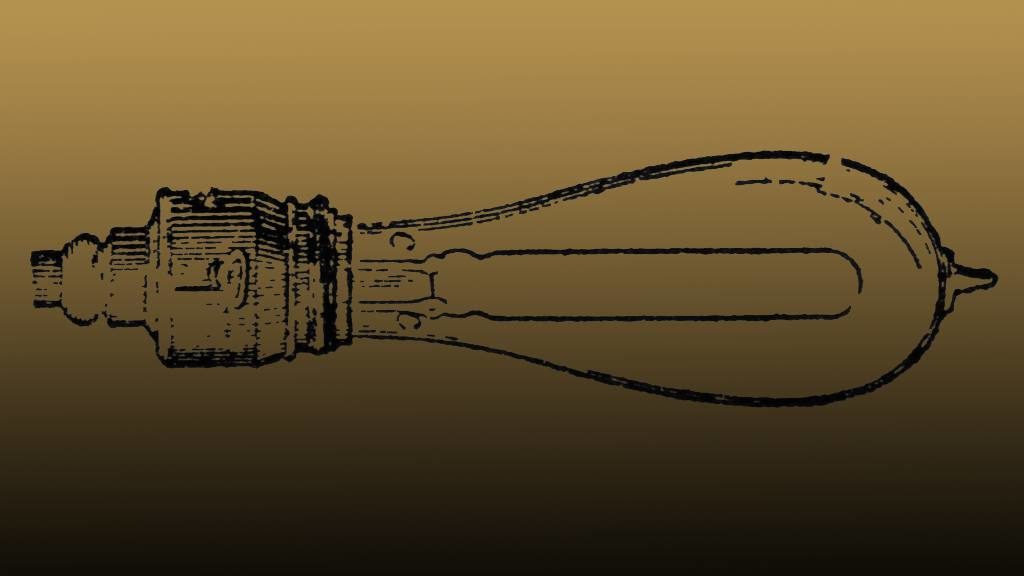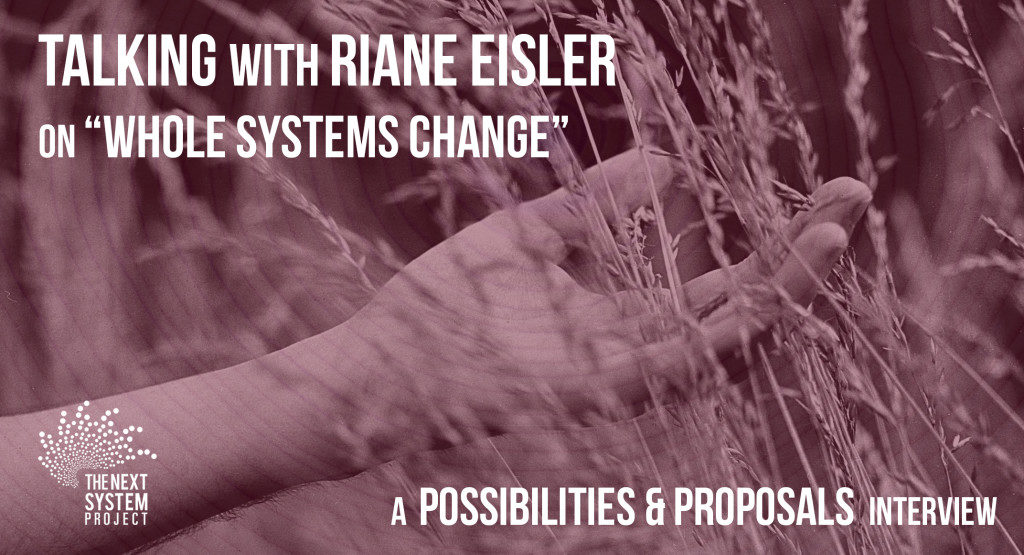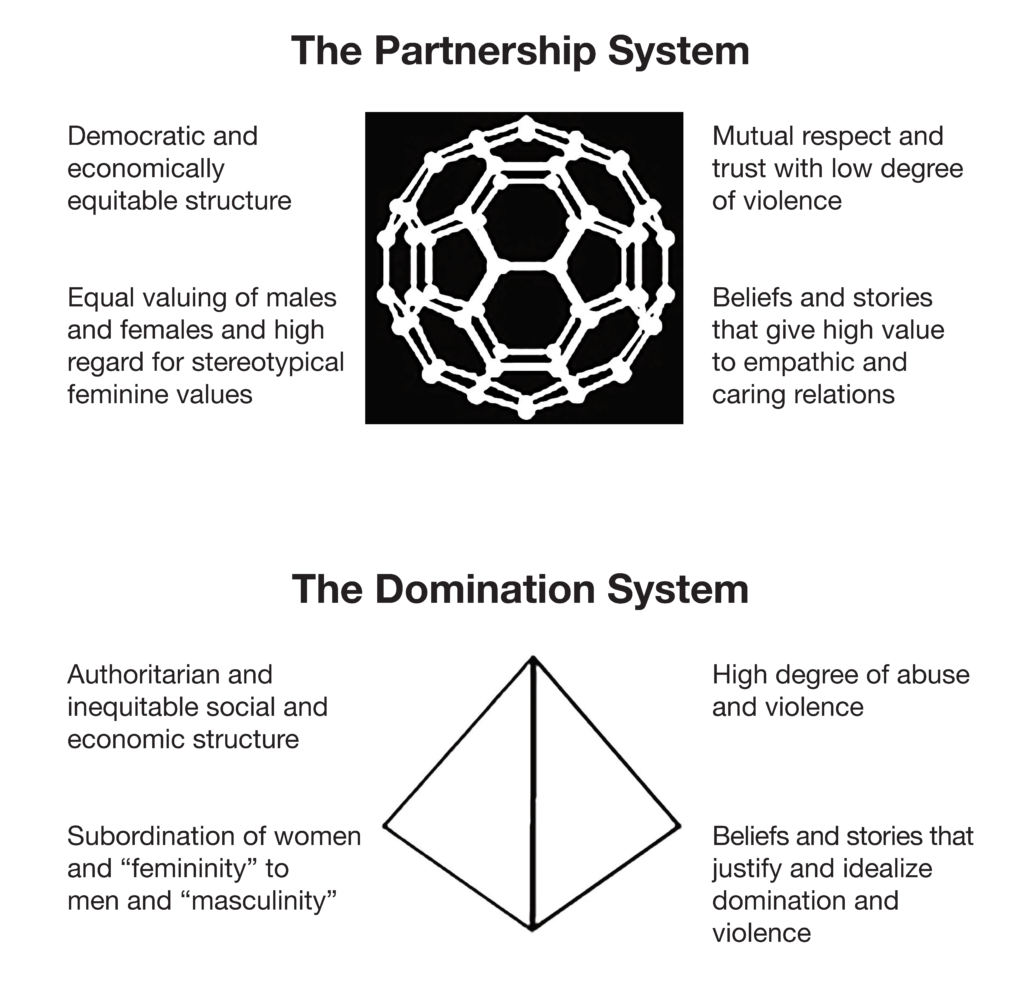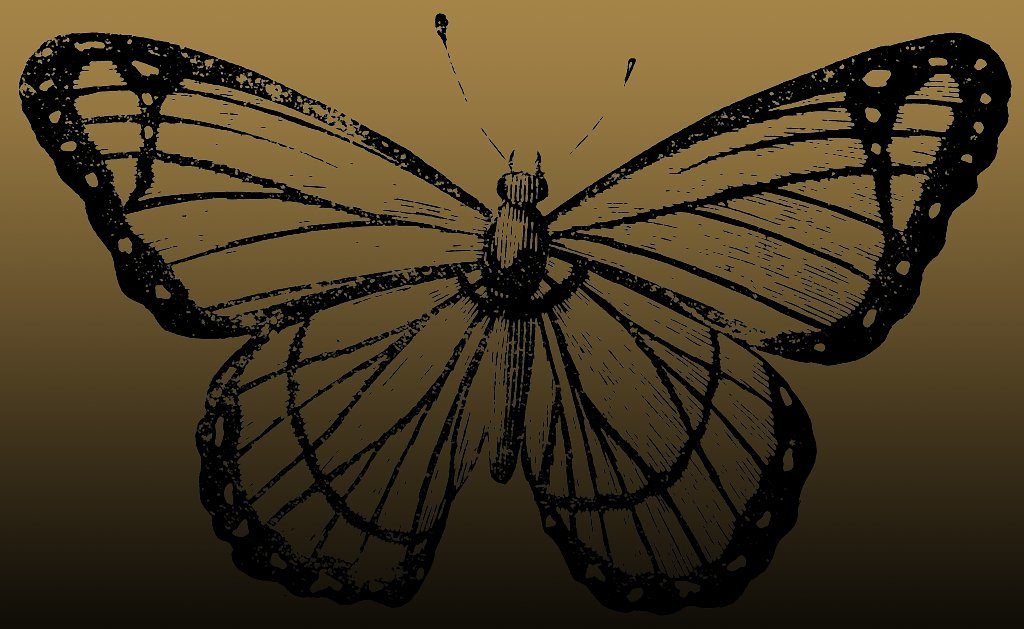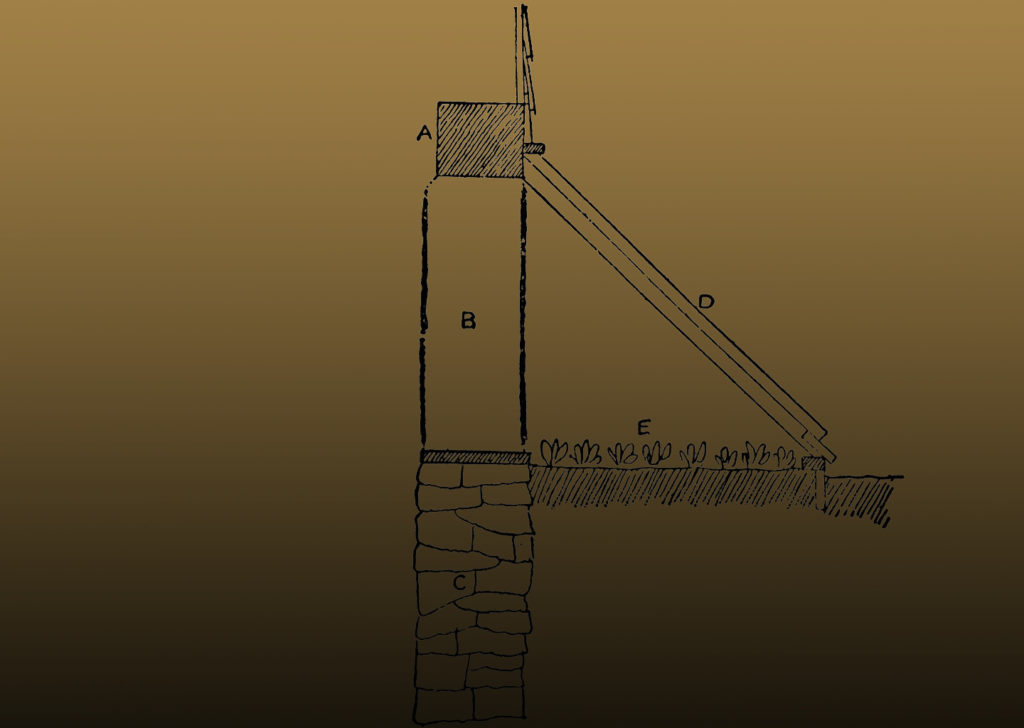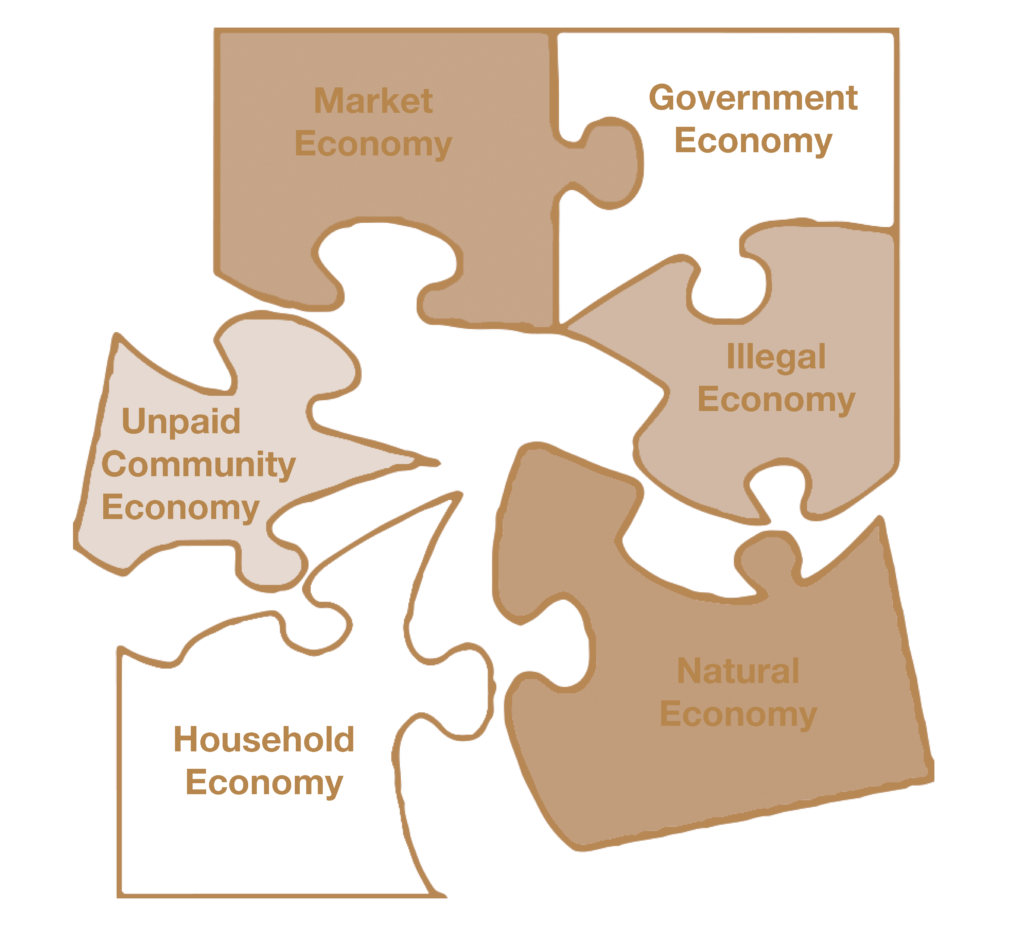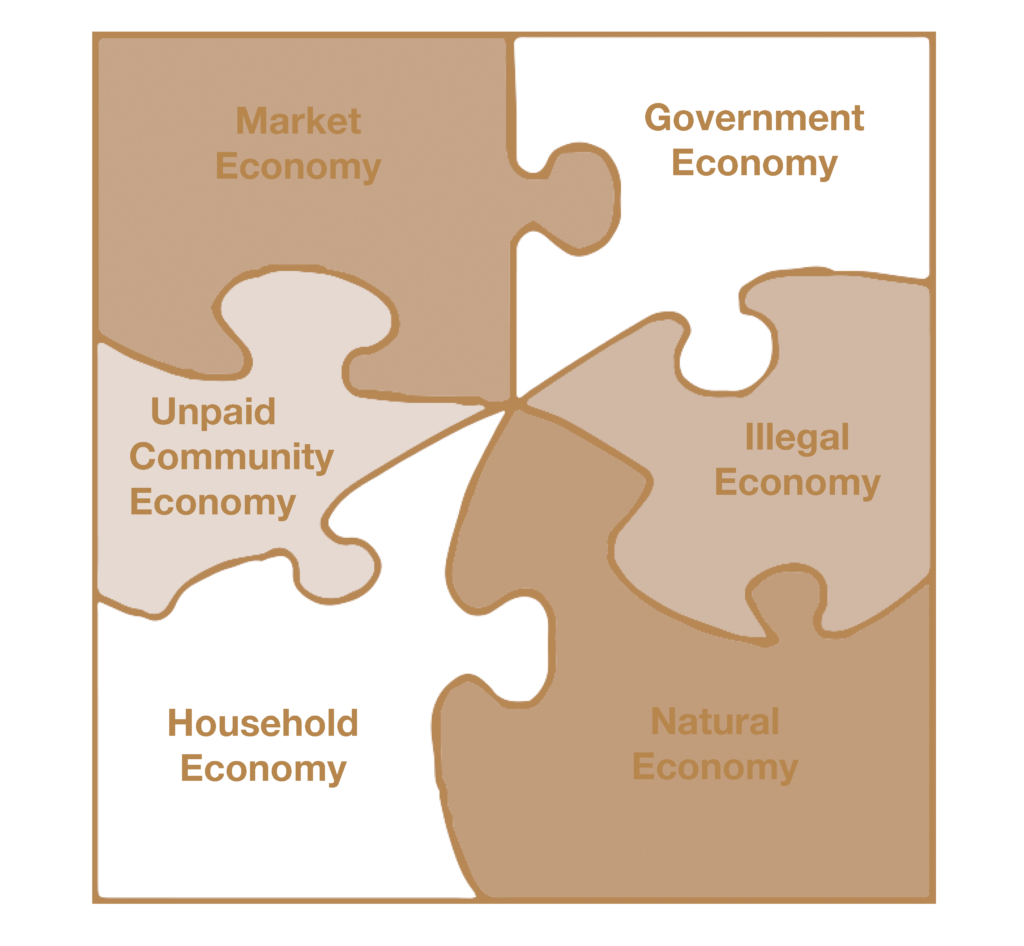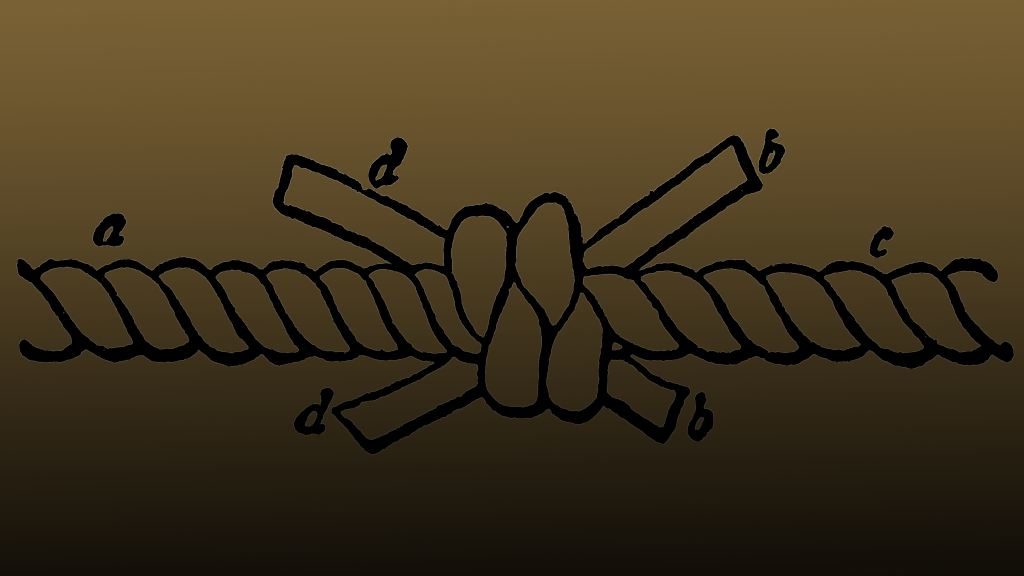Whole Systems Change
PARADIGM CHANGES, 18 Jul 2016
Riane Eisler | The Next System Project - TRANSCEND Media Service
 A Framework & First Steps for Social/Economic Transformation
A Framework & First Steps for Social/Economic Transformation
This paper by Riane Eisler is one of many proposals for a systemic alternative we have published or will be publishing here at the Next System Project. We have commissioned these papers in order to facilitate an informed and comprehensive discussion of “new systems,” and as part of this effort we have also created a comparative framework which provides a basis for evaluating system proposals according to a common set of criteria.
Overview
1 Mar 2016 – Today’s nuclear and biological weapons give us destructive powers once attributed only to a vengeful God. Fossil fuels combined with our species’ exponential population growth are decimating our natural life-support systems. A seismic technological shift, as radical as that from foraging to farming and from agriculture to manufacturing, is hurling us into the postindustrial, knowledge-service age. Jobs are disappearing, and many more soon will be lost to robotics and artificial intelligence. The chasm between haves and have-nots is again widening both within and between nations. Religious fanaticism is resurging, promising heavenly rewards for terrorizing, maiming, and killing.
And that is only the short list of our environmental, economic, and social problems. Yet the vast majority of people, including most national leaders, academics, and mass media, remain in a kind of trance, insulated by old ways of thinking.
Fortunately, a growing number of people recognize that we stand at a turning point in our human adventure on Earth. They are reexamining not only what was and is, but also what can, and must, be done. They understand that solving our unprecedented problems calls for more than just tinkering at the edges of failing systems—that we need whole systems change, and that this, in turn, requires a fundamental cultural transformation.
This article outlines key elements of such a cultural transformation. I sketch the methodology that leads to a new conceptual framework for understanding social systems, its key findings, and their implications for whole systems change. I then outline long-term actions focusing on four cornerstones, including fundamental economic changes, as foundations for a more peaceful, equitable, and sustainable future.
To show how to go from proposal to action, I further include references to successful pilot programs testing such actions by the Center for Partnership Studies, a nonprofit research and education organization formed for this purpose.
From Old to New Thinking
After the fall of the Soviet Union, some people contended that capitalism would bring peace and a more equitable world. But capitalism has not brought peace. Instead, it has widened the gap between those on the top and those on the bottom, and has been a major factor in accelerating environmental despoliation and destruction.
Don’t miss our interview with Riane Eisler
In reaction, some again argue that socialism is the answer. But the two mass applications of Marx’s socialist theories in the former Soviet Union and China led to enormous repression and violence, not to speak of massive environmental problems.
Others say that the solution to our ills is democratic elections. But even where there are elections, oligarchies generally rule. Moreover, people often elect authoritarian regimes, as happened in the wake of the “Arab Spring.”
Still others would have us return to prescientific Western times, or alternately, replace Western secularism with Eastern religions. They ignore that the religious European Middle Ages were cruel and repressive, that Eastern religions have helped perpetuate inequality and oppression, and that today’s fundamentalist religious regimes are brutally violent and oppressive.
While different in many respects, all these approaches have one thing in common: they derive from old thinking. They look at societies from the perspective of old categories such as capitalist versus socialist, religious versus secular, Eastern versus Western, rightist versus leftist, and industrial versus pre or postindustrial. They ignore the lessons of history: societies in all these categories have been repressive, unjust, and violent, and all have failed to adequately protect our natural environment.
What kind of social configuration supports the expression of our human capacities for consciousness, caring, and creativity—or, alternately, our capacities for insensitivity, cruelty, and destructiveness?
Most importantly for whole systems change, none of these categories help us answer the most critical question for our future: What kind of social configuration supports the expression of our human capacities for consciousness, caring, and creativity—or, alternately, our capacities for insensitivity, cruelty, and destructiveness?
The multidisciplinary research briefly described below addresses this question.
A New Method of Analysis
The study of relational dynamics is a new method for analyzing social systems.[1] It focuses on two primary relational dynamics:
First, the kinds of relations—from intimate to international—a culture encourages or discourages;
Second, the interactive relationships among key elements of a culture that maintain its basic character.
The study of relational dynamics draws from systems analysis, complexity theory, and self-organizing theory—the study of how different components of living systems interact to maintain one another and the larger whole of which they are a part, and how they can change.[2]
Drawing from a trans-disciplinary database, its sources include: cross-cultural anthropological and sociological surveys and studies of individual societies; writings by historians; analyses of laws, moral codes, art, and literature; scholarship from psychology, economics, education, political science, philosophy, religious studies, archeology, myths and legends; and data from more recent fields such as primatology, neuroscience, gender studies, women’s studies, and men’s studies.[3]
A feature of the study of relational dynamics that distinguishes it from most social analyses is that it not only focuses on political, economic, and other “public” institutions. Its integrative approach takes into account findings from biological and social science, showing the critical importance of the “private” sphere of family and other intimate relations in shaping beliefs, behaviors, and even how our brains develop.[4]
In testing the hypothesis that effective systems change must take into account an interactive dynamic that includes how a society constructs childrearing and gender roles/relations, the two contrasting social configurations described below were identified.
Two Underlying Social Configurations
The social configurations identified by the study of relational dynamics transcend familiar categories, such as religious or secular, leftist or rightist, socialist or capitalist, Eastern or Western, Northern or Southern, and industrial or pre or postindustrial, which only describe particular aspects of a society such as ideology, technology, economics, or location. While this is important information, it does not tell us anything about how a society constructs the gender and parent-child relations where children first experience, observe, and are taught what is considered normal and moral in human relations. Nor does it tell us anything about what kinds of relations in all spheres—from the family, education, and religion, to politics and economics—a society’s beliefs, guiding values, and institutions support or inhibit.
Examining societies from the perspective of the study of relational dynamics reveals social configurations that are not discernible using a conventional siloed, uni-disciplinary approach. Since there were no names for these configurations, the terms domination model and partnership model were chosen to describe them
These new social categories reveal otherwise invisible connections; for example, the connection between whether or not violence is considered normal in childrearing and whether a society is warlike or peaceful; the connection between whether gender norms rank one sex over the other and whether the society is more equitable or inequitable. On the most basic level, these categories provide information about what kinds of social systems support our human capacities for consciousness, empathy, caring, and creativity, instead of our capacities for insensitivity, cruelty, exploitation, and destructiveness.[5]
The Domination Social Configuration
Hitler’s Germany (a technologically advanced, Western rightist society), Stalin’s USSR (a secular, leftist society), Khomeini’s Iran, the Taliban of Afghanistan, ISIL in Iraq and Syria (Eastern religious societies), and Idi Amin’s Uganda (a tribalist society) have been some of the most brutally violent and repressive societies of the past century. From the perspective of conventional categories, these societies seem totally different. But they share the core configuration of the four interactive, mutually supporting components of the domination model:
- A structure of rigid top-down rankings in both the family and the state or tribe, and all institutions in between;
- The rigid ranking of the male half of humanity over the female half, and, with this, a system of gendered values in which traits and activities culturally associated with women or the “feminine,” such as caring, caregiving, and nonviolence, are devalued;
- Culturally-accepted abuse and violence—from child-and-wife-beating to pogroms, lynchings, public executions, and chronic warfare—that maintain hierarchies of domination, be they man over woman, man over man, race over race, religion over religion, tribe over tribe, or nation over nation;
- The belief that all of the above are inevitable, normal, and even moral.
The Partnership Configuration
The partnership model configuration also consists of four interactive components:
- A democratic structure in both the family and the state or tribe, and all institutions in between;
- Equal partnership between women and men, and with this, a high valuing in both women and men, as well as in policy, of qualities and behaviors such as nonviolence, nurturance, and caregiving denigrated as “soft,” feminine,” and “unmanly” in domination systems;
- Abuse and violence are not institutionalized or idealized since they are not needed to maintain rigid rankings of domination;
- Beliefs about human nature support empathic and mutually respectful relations. Although insensitivity, cruelty, and violence are recognized as human possibilities, they are not considered inevitable, much less moral.
Please see Figure 1 for a visual representation of the configurations of the partnership model and the domination model.
Figure 1. Partnership Model and Domination Model
As with societies that orient to the domination end of the partnership/domination continuum, societies orienting to the partnership end transcend conventional categories such as religious or secular, Eastern or Western, industrial, preindustrial, postindustrial, and so on.
To illustrate, in contrast to domination-oriented tribal societies, where family violence is customary and may include brutal rituals such as female genital cutting/mutilation, are the forest Teduray of the Philippines studied by University of California anthropologist Stuart Schlegel. He writes:
I used to call them ‘radically egalitarian.’ But… they have the core configuration characteristic of the partnership model: they are generally egalitarian, women and men have equal status, and they are peaceful.[6]
The agrarian Minagkabau, the fourth largest ethnic group in the Sumatran archipelago, also orient to the partnership side of the continuum. As among the Teduray, violence is not part of Minagkabau child raising. Women play major social roles. Stereotypically feminine values such as caring and nurturing, as University of Pennsylvania anthropologist Peggy Sanday writes, are valued in both women and men, and in their belief system nurture is a basic principle of nature.[7] Sanday writes:
The Minagkabau subordinate male dominion and competition, which we consider basic to human social ordering and evolution, to the work of maternal nurture, which they hold to be necessary for the common good and the healthy society . . . Social well-being is found in natural growth and fertility according to the dictum that the unfurling, blooming, and growth in nature is our teacher.”[8]
On the other side of the planet, Nordic nations such as Sweden, Finland, and Norway also orient more to the partnership side of the continuum. These technologically advanced societies are not ideal, but they have more democracy in both the family and the state, with no huge gaps between haves and have-nots. Women hold high political offices (they are 40 to 50 percent of national )[9] and because the status of women is higher, the status of the “feminine” is also higher. Nurturance is supported by fiscal policy through measures such as universal health care and childcare, elder care with dignity, stipends to help families care for children, generous paid parental leave, and other caring policies.[10]
These more partnership-oriented societies support activities that model and promote empathy and caring. So they tend to be more empathic, as shown by their large investment in caring for their own people, as well as in NGOs that care for people in far-away places. They have many cooperative economic enterprises, and have been leaders in environmental sustainability. Also, not coincidentally, these more partnership-oriented nations have been at the forefront of the movement to leave behind traditions of violence and domination. They have a strong men’s movement to decouple “masculinity” from its association with domination and violence, pioneered peace studies programs, and introduced the first laws against physical discipline of children in families.[11]
It has been argued that the reason for these advances toward greater democracy, equity, and reduced violence is that these are small, homogenous nations. But other small, homogeneous nations, for example, Saudi Arabia, are undemocratic and rigidly male-dominated, with wealth and power concentrated in a small elite, and violence, such as “honor” murders and public beheadings, used to maintain top-down control in both family and state. So the difference is not a matter of size or homogeneity, but whether a culture orients to the partnership or domination model.
Moreover, these Nordic nations are not “democratic socialist,” as they are sometimes called. They have healthy market economies. What distinguishes them are not socialist tenets such as centralized state control or the abolition of private property, but their more caring character. Indeed, they often call themselves “caring societies”—another way of describing partnership-oriented cultures.
Caveats
This takes us to further clarifications about the partnership model.
To begin with, when searching for a name to describe the social configuration that supports relations of mutual respect, accountability, and benefit, “partnership” was chosen because mutuality is, at least in theory, the basis for relations among business partners. At that time, the term was not yet a popular synonym for working together. I therefore want to emphasize that the distinction between the partnership and domination model is not that there is cooperation in the former and not the latter. People cooperate all the time in domination-oriented systems. Members of monopolies, invading armies, criminal gangs, and terrorist groups all work together.
A second caveat is that partnership structures are not flat. Every society requires parents, teachers, managers, and leaders—so there are hierarchies. But instead of hierarchies of domination, they are hierarchies of actualization: more flexible structures where the ideal norm is not power over but power to and power with (the kind of power described in today’s progressive management literature as empowering rather than disempowering, and in progressive parenting literature as authoritative rather than authoritarian).
A third caveat is that the difference between domination and partnership systems is not that there is no competition in the latter. There is competition in both, but rather than dog-eat-dog competition aimed at destroying or putting competitors out of business, in partnership systems, achievement by others are spurs to striving for excellence.
Another caveat is that while a major difference between domination and partnership systems is whether both genders are equally valued or men and “masculinity” are ranked over women and “femininity,” this is not about anything inherent in women or men. As shown today by men embracing “feminine” roles, feeding and diapering babies, and women entering positions of leadership once considered an exclusive male preserve, gender roles become more fluid with the move toward the partnership model and so-called “feminine” traits and activities such as caring, caregiving, and nonviolence are valued in both men and women.
Neither are partnership systems conflict-free. But in domination systems, conflict is suppressed until it explodes in violence, and violent struggle is idealized. In partnership systems, whenever possible, conflict is nonviolent, and the normative ideal for handling it is as an opportunity to find creative solutions.
This leads to another point related to the use of violence: that to be successful, the shift to the partnership side of the continuum must be global. A lesson from history is that more partnership-oriented nations must have the capacity to protect themselves from societies that are still on the domination end of the continuum. Otherwise, they will be overrun, as almost happened when the Nazis built up their military capacity while the Allies, including the United States, did not.
Still another important point, as shown by the growing control of politics by powerful US moneyed interests, is that democratic elections alone are not sufficient to counter regressions to the domination model. Certainly partnership systems are democratic. But here, democracy is defined more broadly than just elections, starting with respect for human rights in all relations—from intimate to international.
In short, these models do not support simplistic notions such as “all would be well if people only cooperate” or “we must avoid conflict.” What they describe are social configurations that support two different kinds of relations, beliefs, and institutions—from the family, education, and religion to politics and economics—providing information vital for cultural transformation.
Cultural Transformation
The domination model has always caused terrible damage to people and nature. But at our level of technological development, it is not sustainable. The mix of high technology and an ethos of domination and conquest—be it of people or nature—threatens our survival.
The mix of high technology and an ethos of domination and conquest—be it of people or nature—threatens our survival.
It is therefore essential that we accelerate a whole-systems shift. I say “accelerate” because there is already movement in this direction. With the disequilibrium brought by the Industrial Revolution and, more recently, by the rapid move into the knowledge-service era, old beliefs and institutions were destabilized, opening up the possibility of fundamental change.
This takes us to another outcome from the study of relational dynamics: cultural transformation theory.[12] Like chaos theory,[13] cultural transformation theory holds that living systems can undergo transformative change during times of great disequilibrium. This nonlinear theory also traces the tension between the partnership model and the domination model through the course of our cultural evolution. Introduced to a general readership in The Chalice and the Blade: Our History, Our Future, this theory drew primarily from Western data, but has been confirmed by scholars in other world regions, including China.[14]
Cultural transformation theory holds that most gathering-hunting cultures oriented more to the partnership side of the continuum, as also shown by studies of contemporary gathering-hunting societies.[15] Evidence from archeology and myth indicates this was the primary direction for most cultures in the early Neolithic or farming age, a direction that continued in some places as late as the Bronze Age.[16] Then, with the imposition of domination systems during a period of disequilibrium, brought by massive climate changes, mass migrations, and other dislocations, there was a shift in the mainstream of cultural evolution.[17] Thereafter, the domination model became the norm for much of recorded history, despite periodic movement in a partnership direction. But during another period of great disequilibrium brought by the gradual shift from the agrarian to the industrial and now postindustrial age, the partnership movement has been gaining momentum, as, at least in some world regions, one social movement after another challenged traditions of domination .
The seventeenth and eighteenth-century Enlightenment “rights of man” movement challenged the so-called divinely ordained right of kings to rule. The eighteenth and nineteenth-century feminist movement challenged the supposedly divinely ordained right of men to rule the women and children in the “castles” of their homes. The nineteenth and twentieth-century abolitionist, civil rights, and anticolonial movements challenged another “divinely-ordained” right: that of “superior” races to rule over “inferior” ones. The movement for economic justice challenges traditions of top-down economic rule. The peace movement, and, more recently, the movement to end traditions of domination and violence against women and children, challenge the use of violence to impose one’s will on others. The environmental movement challenges the once hallowed conquest and domination of nature.[18]
However, progress toward partnership has not been linear. It can best be imaged as an upward spiral countered by dips or periodic regressions.[19]
There are many factors behind these regressions. But a major factor is that most progressive movements have paid almost exclusive attention to the so-called public sphere of economic and political relations: the “men’s world” from which women and children are excluded in domination systems. Changing parent-child and woman-man relations in the so-called private sphere received far less attention. Consequently, traditions of domination in these relations remained in place, providing foundations on which domination systems kept rebuilding themselves.
Consider that for the most repressive modern regimes—from Hitler’s Germany and Stalin’s Soviet Union to Khomeini’s Iran to the Taliban of Afghanistan and ISIL in Iraq and Syria—a top priority has been maintaining or reinstating family relations based on domination and submission. Today’s so-called religious fundamentalists—be they Muslim, Hindu, Jewish, or Christian—focus on returning to a “traditional family” in which men dominate women, and children learn never to question orders, no matter how painful or unjust. This domination-based family structure provides the foundation for the repressive theocratic system these regimes want to impose.
In addition, despite the fact that our global population explosion is a major driver behind resources depletion, pollution, and other environmental crises, fundamentalist leaders fiercely oppose reproductive freedom for women. Indeed, male control over women is characteristic of rigid domination systems, whether secular or religious. For example, when Stalin came to power, the small earlier steps toward gender equity in families halted, abortion was again severely criminalized, and while some women gained lower level positions, the top leadership was again exclusively male.[20]
Regressive leaders are also extremely hostile to acknowledging the full spectrum of sexual orientations. One root cause is that they assume that a household, headed by a male head who controls women and children is the God-given order that may not be abrogated.
It is also not coincidental that these leaders promulgate parenting that inculcates absolute obedience to authority. For instance, some religious guides in the US instruct parents that spanking and other forms of violence avoid “spoiling,” and urge parents to force eight-month old babies to sit still with their hands on their high-chair trays—effectively terrorizing them so they automatically submit to domination as adults.[21]
Neither is it coincidental that those who fiercely oppose government regulations that would limit the power of mega-corporations and the super-rich, are also bent on denying women reproductive freedom, equal employment protection, and an equal say in families. They, too, viscerally recognize that the ranking of one half of humanity over the other is integral to the top-down economic system they support.
Foundations for Whole Systems Change
Viewed through the lens of the new conceptual framework sketched above, it is evident that there are today many important efforts to accelerate the shift toward the partnership side of the continuum worldwide. However, regressions will continue, with disastrous effects, unless we build the missing foundations for a partnership future.
What follows is a quick overview of four cornerstones for these foundations. I pay particular attention to one of them, economics, both because economic transformation is key to whole systems change, and because a new economic paradigm, and policies that support it, is the focus of a major program of the Center for Partnership Studies.
The First Cornerstone: Childhood Relations
Although people can change throughout life, early experiences and relations are critical. Neuroscience shows that the neural pathways of our brains are not set at birth: they are largely formed in interaction with a child’s early experiences and observations.[22] When family relations based on chronic violations of human rights are considered normal and moral, they provide mental and emotional models for condoning such violations in other relations. If these relations are violent, children learn that violence from those who are more powerful toward those who are less powerful is an acceptable way of dealing with conflicts and problems. Fortunately, some people reject these teachings. But, unfortunately, many replicate them, not only in intimate relations but in all relations—including national and international ones.[23] Coercive, inequitable, and violent childrearing is therefore foundational to the imposition and maintenance of a coercive, inequitable, and chronically violent social organization.
This calls for a global campaign against abuse and violence in childhood relations.[24] Key elements include:
- Education: providing both women and men the knowledge and skills for empathic, sensitive, nonviolent, authoritative rather than authoritarian childrearing. A resource is the Center for Partnership Studies’ Caring and Connected Parenting Guide.[25]
- Laws: enacting and enforcing laws criminalizing child abuse, including using international laws such as the Rome Statute to protect children and women from family violence.[26]
- Media: eliminating the idealization of violence in action entertainment and “sitcoms” where family members abuse and humiliate each other.
- Morality: engaging religious leaders to take a stand against intimate violence—the violence that every year blights, and often takes, the lives of millions of children and women, and models violence for all relations. This is the mission of the Center for Partnership Studies’ Spiritual Alliance to Stop Intimate Violence (SAIV).[27]
The Second Cornerstone: Gender Relations
When people learn to equate difference—beginning with the most fundamental difference in our species between male and female—with superiority or inferiority, dominating or being dominated, being served or serving, they internalize a template that can automatically be applied to a different race, religion, ethnicity, sexual orientation, and so forth.
The social construction of gender roles and relations also shapes a society’s guiding values. Along with the subordination of the female half of humanity that we inherited from more rigid domination times, comes the subordination of traits and activities stereotypically associated with femininity, such as caring, caregiving, and nonviolence that in domination systems are considered unfit for “real men.”
This gendered system of values adversely affects quality of life. For example, Women, Men, and the Global Quality of Life—a study based on statistics from eighty-nine nations conducted by the Center for Partnership Studies—found that the status of women is a predictor of general quality of life.[28] More recently, the World Economic Forums’ Gender Gap reports also confirmed the correlation between the status of women and economic success.[29] Two reasons are that depriving half the population of equal opportunities deprives societies of enormous contributions, and that as long as women are devalued, so also are policies considered “soft” or “feminine” in domination systems.
A global campaign for equitable and nonviolent gender relations can accelerate forward movement. It would consist of the same four components listed above for the campaign against abuse and violence in childhood relations: Education, Laws, Media, and Morality. Progressive leaders worldwide must be engaged in this campaign. Foundations should also prioritize empowering girls and women and promoting women’s leadership worldwide, as exemplified by the NoVo Foundation, a leader in this vital enterprise.
The Third Cornerstone: Economic Relations
As documented in The Real Wealth of Nations: Creating a Caring Economics, we urgently need new economic thinking that takes us beyond both capitalist and socialist theory.[30]
If we reexamine the critique of capitalism as unjust and exploitive from the perspective of the partnership-domination continuum, we see that it is actually a critique of the beliefs, institutions, and relationships inherent in domination systems—be they ancient or modern, Western or Eastern, feudal, monarchic, or totalitarian.
Long before capitalist billionaires amassed fortunes, Egyptian pharaohs and Chinese emperors hoarded their nations’ wealth. Indian potentates received tributes of silver and gold, while lower castes lived in abject poverty. Middle Eastern warlords pillaged, plundered, and terrorized their people. European feudal lords killed their neighbors and oppressed their subjects. Today’s “trickle-down economics” is a replay of earlier traditions where those on bottom must content themselves with the scraps dropping from the opulent tables of those on top.
To understand, and change, current economic systems, we have to understand, and change, the domination social context from which they, and the theories that support them, derive.
That capitalist theory and practice reflects our domination heritage should not surprise us, since Adam Smith developed this economic model in the eighteenth century, when rigid top-down rankings were even more entrenched. When Karl Marx challenged capitalism in the nineteenth century, his socialist theory also reflected dominator assumptions—including using force to impose the “dictatorship of the proletariat.”
For both Marx and Smith, nature was there to be exploited. Citing Smith’s statement that wealth derives from a nation’s land and labor, attempts have been made to attribute concern for our natural environment to him.[31] However, rather than recognizing nature’s limitations, Smith contended that wealth would grow endlessly thanks to the “invisible hand of the market” guided by self-interest. Similarly, while some have tried to attribute concern for our natural environment to Marx,[32] his scientific socialism gives almost exclusive importance to the “commodification of labor,” ignoring the devastating impact of industrialization on nature.[33]
In short, caring for nature is not part of either capitalist or socialist theory. Equally harmful is that caring for people is devalued in both systems.
Smith and Marx considered caregiving “women’s work.” So for them it was merely “reproductive” labor—not part of what they considered “productive.” This distinction between “productive” and “reproductive” labor has been roundly criticized, especially for perpetuating a gendered economy that severely disadvantages women and children.[34] Yet despite mounting evidence that not caring for our natural environment is potentially suicidal, and despite findings from neuroscience that caring for people, starting in early childhood, is key to producing the “high-quality human capital” essential for the postindustrial knowledge/service economy, this distinction between “productive” and “reproductive” labor is still integral to current economic thinking and policies.[35]
Changing this fallacious distinction, and the damage it causes, requires a new economic paradigm. This does not mean leaving everything from capitalism and socialism behind. It means discarding their domination elements and preserving their partnership elements—and going beyond both to create a new economic model that recognizes that the most important human work is caring for people and nature.
Old economic theories that give hardly any visibility or value to the life-sustaining activities of households and of nature—the activities without which there would be no economy, no workforce, in fact, no people—have led to great human suffering and environmental degradation. Today, we are moving from the industrial to the postindustrial knowledge-service economy, and old economic policies and practices are savaging our natural environment. This makes the need for a more accurate and realistic economic map more urgent than ever before. Please see Figures 2 and 3 below.
Figure 2: Old Economic Map
The Real Wealth of Nations: Creating a Caring Economics proposes an economic map that includes all six of the sectors that actually compose economic systems:
- the household economy
- the unpaid community economy
- the market economy
- the illegal economy
- the government economy
- the natural economy[36]
Figure 3: New Economic Map
This full-spectrum economic map provides the basis for a new economic paradigm—one that gives visibility and value in its metrics, policies, and practices to the essential work of caring for people and our Earth.[37] Once we use this full-spectrum economic map, we can envision a new theoretical framework for economics. This theoretical framework will not come together all at once. There will be many subsets of theories. But as the demand for more caring structures and rules grows worldwide, we can begin to revise economics in ways that support positive changes in economic policies and practices.
An important step toward constructing this new economic paradigm, and ensuring it receives policy support, is demonstrating that the caregiving work performed in both the market and household economic sectors is essential to produce the “high quality human capital” needed for economic success in the knowledge-service age. This support is also essential to cut through cycles of poverty. This is not only because children need good care and early education to develop their potentials, but because the disproportionate poverty of women and children worldwide is largely due to the fact that women still do the bulk of caregiving for very low wages in the market, and for free in homes.
It makes no sense to talk of ending poverty in generalities when the mass of the world’s poor and the poorest of the poor are women and children.
It makes no sense to talk of ending poverty in generalities when the mass of the world’s poor and the poorest of the poor are women and children. Even in the rich United States, women over the age of sixty-five are, according to US Census statistics, almost twice as likely to be poor as men over sixty-five.[38] A major reason is that most of these women are, or were, caregivers.
To change these dismal realities, pilot testing of effective steps toward solutions is vital.
The Center for Partnership Studies’ Caring Economy Campaign (CEC) is a successful pilot program that substantiates the return from investing in caring for people, starting in early childhood, through policies such as paid parental leave, support for high quality childcare, caregiver tax credits, and Social Security for caregivers. [39] A major component of this program has been the development of Social Wealth Economic Indicators (SWEIs) documenting the economic benefits of investing in care, and the dismal consequences of devaluing it, especially for marginalized populations such as people of color in the United States.[40]
SWEIs go beyond GDP as well as most “GDP alternatives.” They show that the United States is way behind other developed nations in investing in family care, early education, and environmental stewardship—and must catch up, for human, environmental, and economic reasons.
The Caring Economy Campaign addresses systemic issues, such as the need for rethinking what is productive work in an age when automation and other technological breakthroughs are rapidly taking over jobs. It asks basic questions, such as what kind of economic system can meet both our material needs and our needs for caring, meaning, and purposeful lives.
The CEC provides online trainings for change-agents worldwide, preparing participants to be effective advocates for government and business policies that help people move out of poverty and the stress of trying to balance family and employment.
This pilot program’s long-term goals are changing the uncaring values driving present economic systems, and stimulating social and economic inventions for a more caring, sustainable, and less stressful way of living and making a living.
The Fourth Cornerstone: Stories, Morality, and Spirituality
We humans live by stories. Therefore, cultural transformation requires more accurate stories about our personal, social, and economic possibilities.
We humans live by stories. Therefore, cultural transformation requires more accurate stories about our personal, social, and economic possibilities.
Religious stories about “original sin” and secular stories about “evolutionary imperatives” claim that humans are innately selfish and violent—and must be rigidly controlled. Yet findings from neuroscience demonstrate that although we humans have the capacity for cruelty and violence, we are actually “wired” more for empathy and caring.[41]
We are also learning about the great flexibility of human nature: that which genetic capacities we express or inhibit is a function of the interaction of genes and environments—and the most important human environments are cultural.[42]
Spreading new narratives, including new theories about our past, present, and the possibilities for our future, requires a concerted effort by educators, artists, writers, and scholars. To this end, the Center for Partnership Studies helped launch the Interdisciplinary Journal of Partnership Studies, an online, peer reviewed, open-access journal at the University of Minnesota. Its mission is to share scholarship and create connections “for cultural transformation to build a world in which all relationships, institutions, policies and organizations are based on principles of partnership.”[43] In addition, we are exploring plans for a Program in Partnership Studies or a Center for the Study of Partnership Systems at the University of Minnesota to do research and develop curricula and other resources for transformation. We invite you to participate in this new venture, as well as in the journal.
Partnership-oriented stories about spirituality and morality are also essential. We must show that spirituality can be a path to creating a better world right here on Earth, instead of just an escape from “this vale of tears” to otherworldly realms. And, rather than being used to coerce, dominate, and, all too often, kill, morality must be imbued with caring and love.
Conclusion
We cannot successfully move forward unless we identify our alternatives. The struggle for our future is not between East and West, North and South, religious and secular, rightist and leftist, capitalist or socialist, or more and less technologically developed societies. It is a struggle within all these kinds of societies: the struggle between those trying to move toward a partnership-oriented system and those pushing us back to rigid rankings of domination.
We have been taught that our only options are dominating or being dominated. Influential religious leaders such as St. Augustine preached that God assigned us a fixed place in society: that wishing to change this is like a finger wanting to be an eye.[44] Even today in cultures and subcultures that orient closely to the domination model, the idea of a fixed social order with authoritarian rule in both family and state persists.
We have also been taught to assign rigid roles by gender, and to divide our species into “superiors” such as males and “inferiors” such as females. Along with this, even in cultures that have rejected some traditions of domination, has come the devaluation of caregiving and nonviolence as “feminine” rather than “masculine.”
I would like to close this article with some thoughts on what our world might look like as we leave this kind of mindset behind. I will especially focus on what can happen when we no longer marginalize so-called women’s and children’s issues, and bring about whole systems change.
Of course, this more partnership-oriented world will not be perfect. But it will be much more equitable, peaceful, and sustainable.
All institutions, not only those for socializing children, will be designed to support the expression of our great human potentials. Instead of being aimed at molding us to conform to rigid gender stereotypes and rankings of domination, learning will be a lifelong process for maximizing flexibility and creativity at all stages of life.
In light of findings from neuroscience on the importance of good care for human development, sound education for childcare, primary school teaching, and other caring professions are a top social priority. These jobs are highly respected and well paid. Parenting education is prioritized. Schools teach boys and girls how to care for self, others, and nature.
As automation, robotics, and artificial intelligence replace more and more jobs formerly performed by people, new economic inventions gradually replace our unsustainable overconsumption-driven economic systems. As we move toward a caring economy, childcare in families is supported by the whole society. There are caregiver tax credits and stipends, paid parental leave, and Social Security credit for the first seven years of caring for a child—whether the caregiver is a woman or a man. All these are funded by the money saved when care is invested in, as well as from taxes on harmful activities and products, which are penalized rather than rewarded.
Instead of being used for destruction and domination, new technological breakthroughs, along with older technologies, are employed to better sustain and enhance life. As material, emotional, and spiritual needs are increasingly met, crime, terrorism, and warfare decrease. As women have reproductive freedom, education, and equal rights, exponential population growth is halted. Rid of the mandate that to be “masculine” men must dominate, nations are more peaceful, and the danger of nuclear or biological annihilation gradually diminishes.
Caring for nature is a basic economic and social principle. Policy makers also recognize that investing in people, starting early on, is key to a just and prosperous economic system.
As the value of caregiving is recognized and supported by policy, the roles of women and men are fundamentally rebalanced. Men and women share paid positions as well as household tasks, childcare, and other social activities.
Companies are rewarded with tax breaks and other benefits for caring practices. Workplaces provide flexible-time, job-sharing, and other partnership inventions, as the work of caring for children, the elderly, and the sick is recognized as productive rather than just reproductive work.
Poverty and hunger are effectively addressed because women (who currently make up the mass of the world’s poor) are rewarded for caregiving. Care for the elderly is facilitated by adequate monetary pensions, including pensions for caregivers.
As caring is more valued, women receive greater respect. Women are half of the national legislatures and often head governments. There is real representative democracy.
Respect for human rights is modeled and taught as fundamental in all relations—from intimate to international. As people no longer learn to equate difference with dominating or being dominated, racism, anti-Semitism, and other ugly old isms fade into memories of a brutal past.
Creativity flourishes in music, literature, and the arts, providing a more hopeful and realistic picture of what being human can mean. New social and economic inventions greatly humanize business, policy, and day-to-day life.
Gaps between haves and have-nots shrink, as people are no longer driven to amass enormous wealth as substitutes for meeting our yearnings for caring connection, creativity, and meaning. And spirituality is no longer so focused on an afterlife, but on building a world where the wonder and beauty latent in every child can be realized right here on Earth.
The good news is that there are trends in these directions. Despite fierce resistance, the partnership movement has been gaining momentum.
But even this forward movement is still largely guided by old beliefs and theories that came out of times that oriented more closely to the domination side of the continuum.
Hence the urgent need for a new conceptual framework that makes visible the interactive, mutually supporting, elements of partnership systems and domination systems—including the role of family and other intimate relations in how cultural beliefs, values, and institutions are structured. Also urgent is concerted action to build foundations for whole systems change.
Clearly, we must continue, and intensify, our various efforts for positive environmental, economic, and social change. But we will greatly advance all these efforts by together building the missing four cornerstones focused on childhood, gender, economics, and stories, spirituality and morality.
Again, my colleagues and I invite you to join us in our efforts to this end. The Center for Partnership Studies’ webinars and online courses are good “on-ramps” to do so.[45] We also invite you to join with us in further developing our Social Wealth Economic Indicators into an international Index, as well as adapting them for state and local use.[46]
Moving to a world that orients primarily to the partnership rather than domination model is a long-term enterprise. It will require time, perseverance, and the courage to challenge established beliefs and structures. But if we are to build a future where all children can realize their capacities for consciousness, caring, and creativity—the capacities that make us fully human—we have to start constructing its foundations now.
Notes:
[1] Riane Eisler, The Chalice and the Blade: Our History, Our Future (San Francisco: Harper & Row, 1987); Riane Eisler, “Human Possibilities: The Interaction of Biology and Culture.” Interdisciplinary Journal of Partnership Studies, 1,1 (2014): article 3. Retrieved from: https://sites.google.com/a/umn.edu/ijps/home/vol1-iss1-art3
[2] Frederick Emery and Eric Trist, Toward a Social Ecology: Contextual Appreciation of the Future and the Present (New York: Plenum Press, 1973); Humbert Maturana and Francisco Varela, Autopoeisis and Cognition: The Realization of the Living (Boston: Reidel, 1980); Ilya Prigogine and Isabelle Stengers, Order out of Chaos (New York: Bantam, 1984).
[3] Eisler, The Chalice and the Blade: Our History, Our Future; Riane Eisler, Sacred Pleasure: Sex, Myth, and the Politics of the Body (San Francisco: Harper Collins, 1995); Riane Eisler, Tomorrow’s Children: A Blueprint for Partnership Education in the 21st Century (Boulder, CO: Westview Press, 2000); Riane Eisler, The Power of Partnership: Seven Relationships that Will Change Your Life (Novato, California: New World Library, 2002); Riane Eisler, The Real Wealth of Nations: Creating a Caring Economics (San Francisco: Berrett-Koehler, 2007); Riane Eisler, “Economics as if Caring Matters,” Challenge 55, 2 (2012): 58-86; Riane Eisler, “Protecting the Majority of Humanity: Toward an Integrated Approach to Crimes Against Present and Future Generations,” in Sustainable Development, International Criminal
Justice, and Treaty Implementation, edited by Sebastien Jodoin. Cambridge, U.K.: Cambridge University Press, 2013; Riane Eisler and Daniel Levine, “Nurture, Nature, and Caring: We are not Prisoners of our Genes,” Brain and Mind 3, 1 (April 2002): 9-52.
[4] Deborah Niehoff, The Biology of Violence: How Understanding the Brain, Behavior, and the Environment can Break the Vicious Cycle of Aggression (New York: Free Press, 1999); Bruce Perry, “Childhood Experience and the Expression of Genetic Potential,” Brain and Mind 3, 1 (April 2002): 79-100; Rena L. Repetti, Shelley E. Taylor, and Teresa E. Seeman, “Risky Families: Family Social Environments and the Mental and Physical Health of Offspring,” Psychological Bulletin 128, 2 (2002): 330-366; Riane Eisler, “Human Possibilities: The Interaction of Biology and Culture,” Interdisciplinary Journal of Partnership Studies 1, 1 (2014): article 3. Retrieved from: http://pubs.lib.umn.edu/cgi/viewcontent.cgi?article=1002&context=ijps.
[5] Eisler, The Chalice and the Blade; Eisler, Sacred Pleasure; Eisler, The Power of Partnership; Eisler, The Real Wealth of Nations; Eisler, “Human Possibilities: The Interaction of Biology and Culture;” Riane Eisler and Teddie Potter, Transforming Interprofessional Partnerships: A New Framework for Nursing and Partnership-Based Health Care (Indianapolis, IN: Theta Tau International, 2014).
[6] Stuart Schlegel, Wisdom From a Rain Forest (Athens, GA: University of Georgia Press, 1998), 244.
[7] Peggy Sanday, Women at the Center (Ithaca, NY: Cornell University Press, 2002).
[8] Sanday, Women at the Center, 22-24.
[9] Drude Dahlerup, “Women in Nordic Politics—A Continuing Success Story?,” The Danish Center for Research and Information on Gender, Equality and Diversity. Retrieved from: http://kvinfo.org/history/women-nordic-politics-continuing-success-story
[10] Eisler, The Real Wealth of Nations.
[11] Eisler, The Real Wealth of Nations.
[12] Eisler, The Chalice and the Blade.
[13] Prigogine and Stengers, Order out of Chaos.
[14] Eisler, The Chalice and the Blade; Jiayin Min, The Chalice and the Blade in Chinese Culture (Beijing: China Social Sciences Publishing House, 1995).
[15] Douglas Fry, editor, War, Peace, and Human Nature: The Convergence of Evolutionary and Cultural Views (New York: Oxford University Press, 2013).
[16] Nicolas Platon, Crete (Geneva: Nagel Publishers, 1966); James Mellaart, Çatal Hüyük (New York: McGraw Hill, 1967); Marija Gimbutas, The Goddesses and Gods of old Europe (Berkeley: University of California Press, 1992); Nanno Marinatos, Minoan Religion: Ritual, Image, and Symbol (Columbia, SC: University of South Carolina Press, 1993); Ian Hodder, “Women and Men at Catalhoyuk,” Scientific American, 290 (January 2004): 77–83..
[17] Mellaart, Çatal Hüyük; Gimbutas, The Goddesses and Gods of Old Europe; J.P. Mallory, In Search of the Indo-Europeans: Language, Archaeology and Myth (London: Thames and Hudson, 1989); Gerda Lerner, The Creation of Patriarchy (New York: Oxford University Press, 1989); Samuel Kramer and John Maier, Myths of Enki, The Crafty God (New York: Oxford University Press, 1989); James DeMeo, “The Origins and Diffusion of Patrism in Saharasia, c.4000 B.C.E.: Evidence for a Worldwide, Climate-Linked Geographical Pattern in Human Behavior,” World Futures 30, no. 4, 1991: 247-271.
[18] Eisler, The Real Wealth of Nations.
[19] Eisler, The Real Wealth of Nations; Riane Eisler, David Loye and Kari Norgaard, Women, Men, and the Global Quality of Life (Pacific Grove: Center for Partnership Studies, 1995).
[20] Eisler, The Real Wealth of Nations; Eisler, Sex, Myth, and the Politics of the Body; Eisler, Protecting the Majority of Humanity.
[21] Elizabeth Thompson Gershoff, “Corporal Punishment by Parents and Associated Child Behaviors and Experiences: A Meta-analytic and Theoretical Review,” Psychological Bulletin 128, no. 4 (2002): 539.
[22] Debra Niehoff, The Biology of Violence: How Understanding the Brain, Behavior, and the Environment Can Break the Vicious Cycle of Aggression (New York: Free Press, 1999); Perry, “Childhood Experience and the Expression of Genetic Potential.”
[23] Michael Milburn and Sheree Conrad, The Politics of Denial (Cambridge, MA: MIT Press, 1996).
[24] Eisler, Protecting the Majority of Humanity.
[25] Licia Rando, Caring and Connected Parenting: A Guide to Raising Connected Children (Pacific Grove: Center for Partnership Studies, 2010), http://saiv.org/parenting-guide/.
[26] Eisler, Protecting the Majority of Humanity.
[27] See Spiritual Alliance to Stop Intimate Violence, http://www.saiv.org.
[28] Eisler, Loye and Norgaard, Women, Men, and the Global Quality of Life.
[29] See “Global Gender Gap Report,” http://reports.weforum.org/global-gender-gap-report-2015/report-highlights/
[30] Eisler, The Real Wealth of Nations.
[31] Patrick Frierson, “Adam Smith and the Possibility of Sympathy with Nature,” Pacific Philosophical Quarterly 87, 4 (2006): 442-480.
[32] Paul Burkett, Marxism and Ecological Economics (Chicago: Haymarket Books, 2009).
[33] Ted Benton, “Marxism and Natural Limits,” New Left Review 178 (November/December 1989): 51–86; Karl Polanyi, The Great Transformation (New York: Farrar & Rinehart, 1944).
[34] Diane Elson, Male Bias in the Development Process (Manchester, UK: Manchester, 1991); Naila Kabeer, Gender Mainstreaming in Poverty Eradication and the Millennium Development Goals (Pall Mall, London: The Commonwealth Secretariat, 2003); Eisler, The Real Wealth of Nations; Eisler, “Economics as if Caring Matters.”
[35] Eisler, “Economics as if Caring Matters.”
[36] Eisler, The Real Wealth of Nations.
[37] Eisler, The Real Wealth of Nations.
[38] 12.1 percent of women and 7.4 percent of men over age 65 lived in poverty in 2014 (https://www.census.gov/hhes/www/poverty/data/incpovhlth/2014/figure6.pdf)
[39] See The Center for Partnership Studies, “Caring Economy Campaign,” http://caringeconomy.org/
[40] See The Center for Partnership Studies, “Social Wealth Economic Indicators,” http://caringeconomy.org/newindicators/
[41] Frans De Waal, The Age of Empathy: Nature’s Lessons for a Kinder Society (New York: Random House, 2009); Fry, War, Peace, and Human Nature; Eisler, Human Possibilities: The Interaction of Biology and Culture.
[42] Perry, “Childhood Experience and the Expression of Genetic Potential;” James Leckman, Catherine Panter-Brick and Rima Salah, editors, Pathways to Peace: The Transformative Power of Children and Families (Cambridge, MA: MIT Press, 2014).
[43] See the Interdisciplinary Journal of Partnership Studies, http://pubs.lib.umn.edu/ijps/
[44] Roy Baumeister, “How the Self Became a Problem: A Psychological Review of Historical Research,” Journal of Personality and Social Psychology 52, I (1987): 169.
[45] See The Center for Partnership Studies, www.centerforpartnership.org, “The Caring Economy,” www.caringeconomy.org
[46] See the “Social Wealth Economic Indicators,” http://caringeconomy.org/newindicators/
_________________________________________
Riane Eisler, J.D., PhD (h), is a systems scientist and cultural historian best known as author of The Chalice and the Blade: Our History, Our Future (now in twenty six foreign editions) and The Real Wealth of Nations: Creating a Caring Economics, hailed by Archbishop Desmond Tutu as “a template for the better world we have been so urgently seeking.” Her most recent book, Transforming Interprofessional Partnerships (Sigma Theta Tau International, 2014) won national and international awards. She has been a leader in the movement for peace, sustainability, and economic equity, and her pioneering work in human rights has expanded the focus of international organizations to include the rights of women and children. She is co-founder and president of the Center for Partnership Studies (CPS), dedicated to research and education on social and economic transformation, and Editor in Chief of the Interdisciplinary Journal of Partnership Studies, an online peer reviewed free access journal at the University of Minnesota inspired by her work. She keynotes conferences nationally and internationally and consults to business and government on applications of the partnership model introduced in her work. For more information, see www.rianeeisler.com.
Images courtesy of FCIT
Go to Original – thenextsystem.org
DISCLAIMER: The statements, views and opinions expressed in pieces republished here are solely those of the authors and do not necessarily represent those of TMS. In accordance with title 17 U.S.C. section 107, this material is distributed without profit to those who have expressed a prior interest in receiving the included information for research and educational purposes. TMS has no affiliation whatsoever with the originator of this article nor is TMS endorsed or sponsored by the originator. “GO TO ORIGINAL” links are provided as a convenience to our readers and allow for verification of authenticity. However, as originating pages are often updated by their originating host sites, the versions posted may not match the versions our readers view when clicking the “GO TO ORIGINAL” links. This site contains copyrighted material the use of which has not always been specifically authorized by the copyright owner. We are making such material available in our efforts to advance understanding of environmental, political, human rights, economic, democracy, scientific, and social justice issues, etc. We believe this constitutes a ‘fair use’ of any such copyrighted material as provided for in section 107 of the US Copyright Law. In accordance with Title 17 U.S.C. Section 107, the material on this site is distributed without profit to those who have expressed a prior interest in receiving the included information for research and educational purposes. For more information go to: http://www.law.cornell.edu/uscode/17/107.shtml. If you wish to use copyrighted material from this site for purposes of your own that go beyond ‘fair use’, you must obtain permission from the copyright owner.

